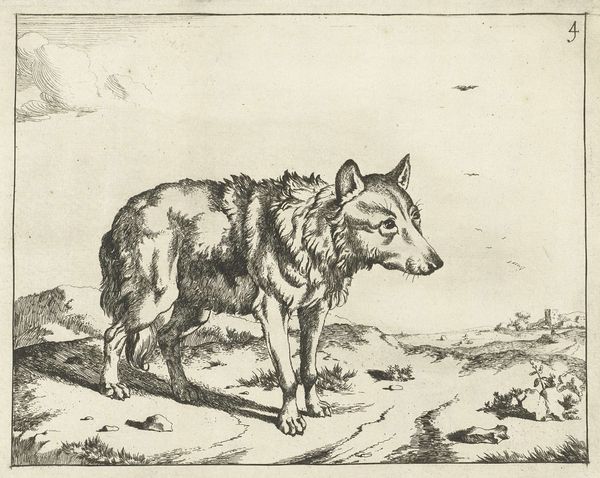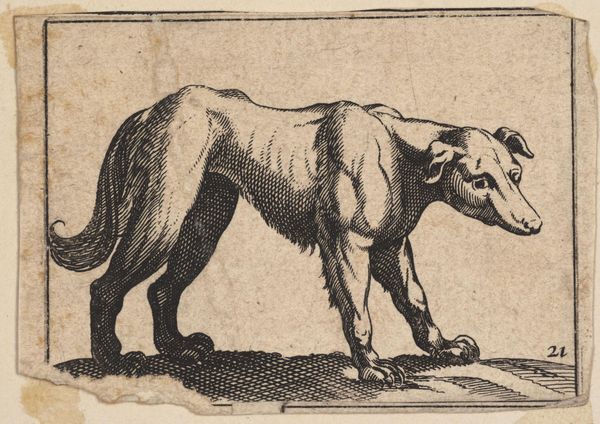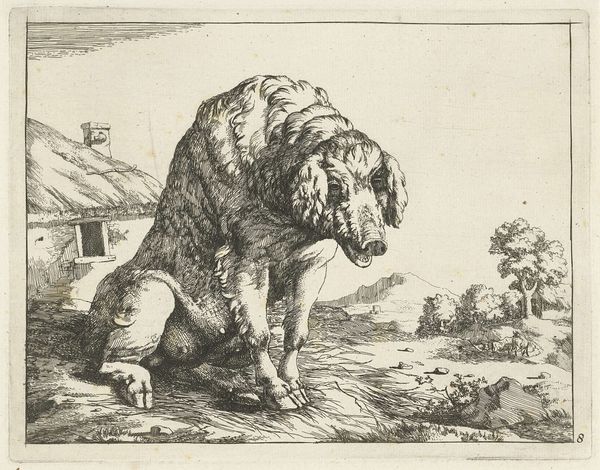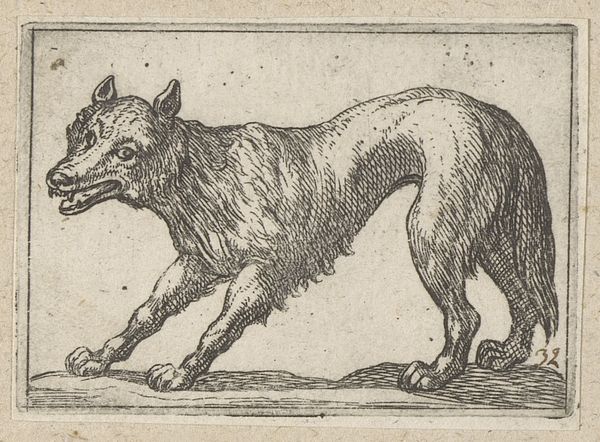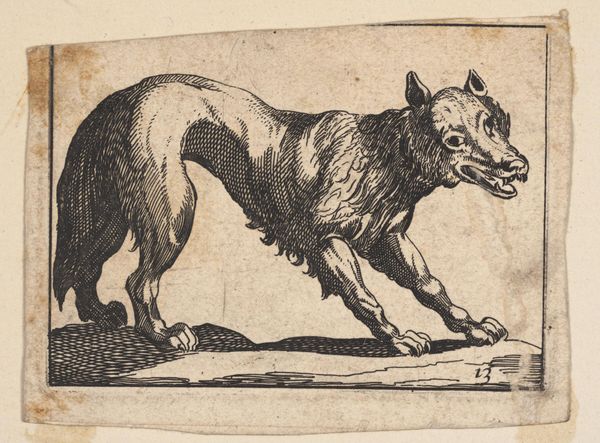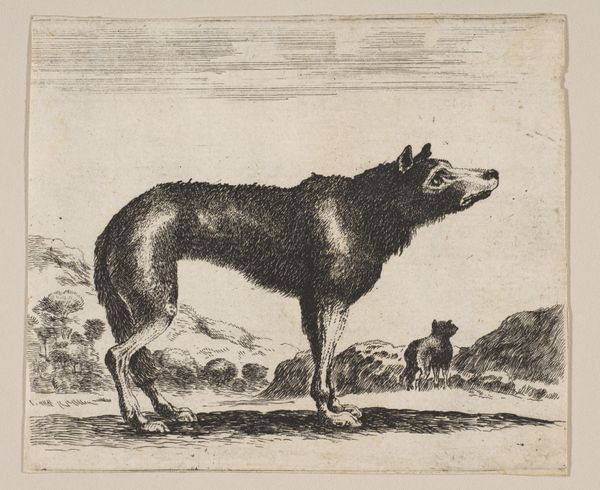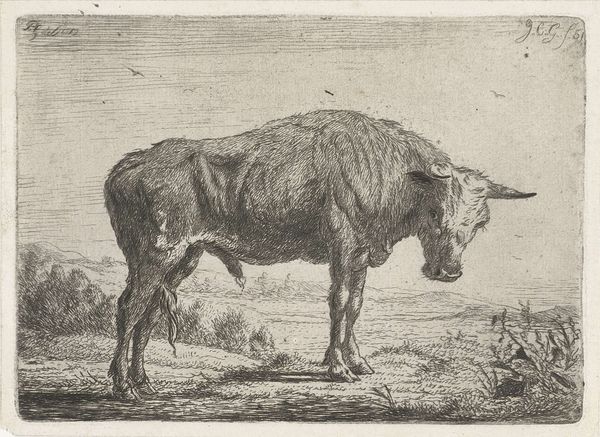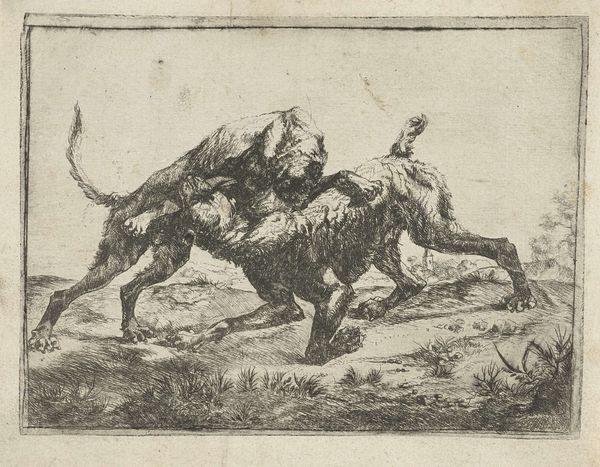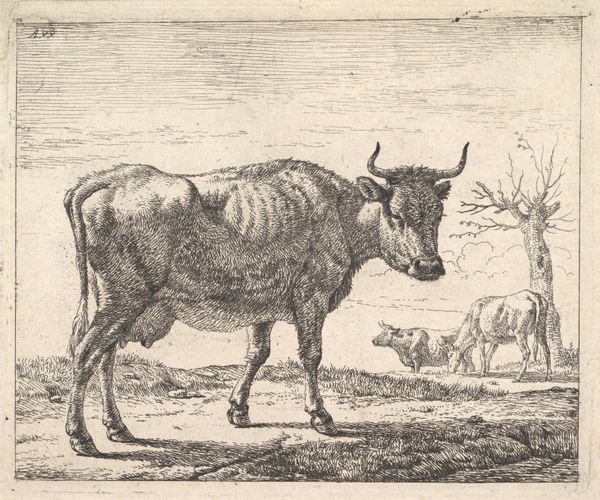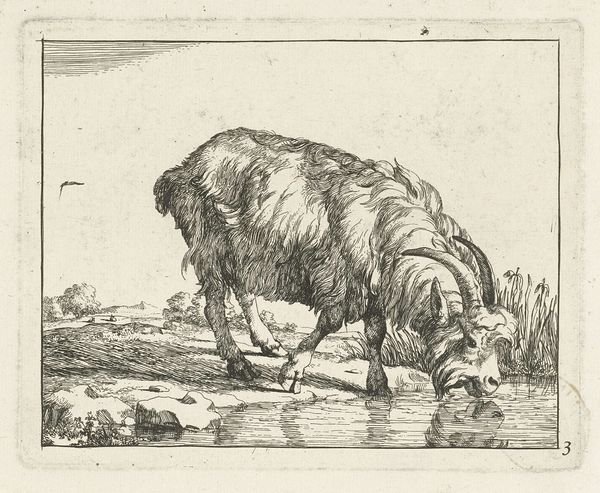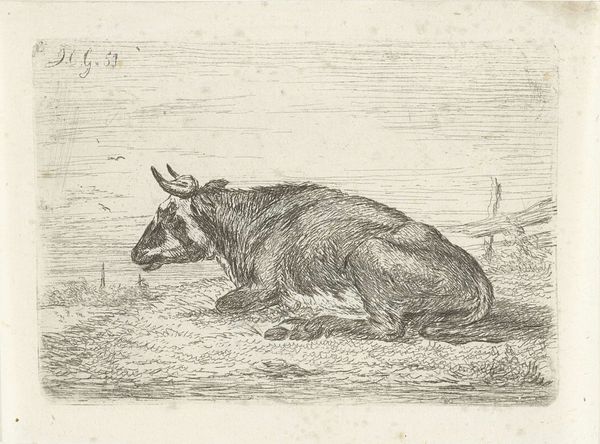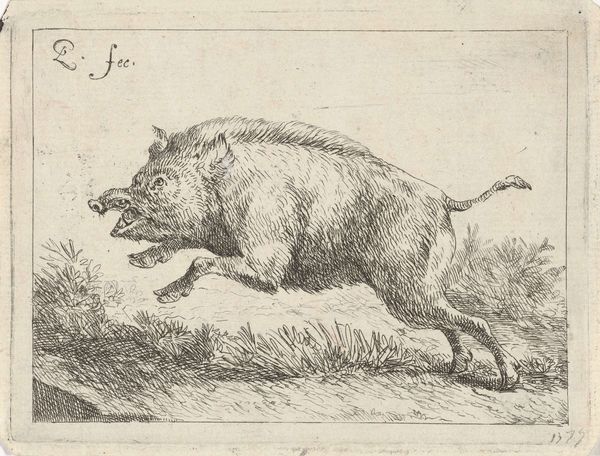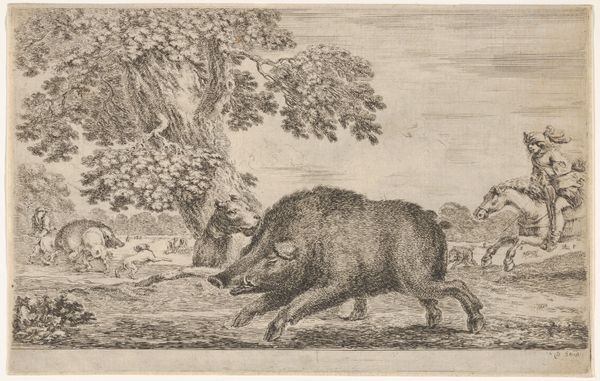
drawing, engraving
#
drawing
#
light pencil work
#
quirky sketch
#
baroque
#
animal
#
pencil sketch
#
landscape
#
personal sketchbook
#
sketchwork
#
pen-ink sketch
#
sketchbook drawing
#
pencil work
#
sketchbook art
#
engraving
#
fantasy sketch
#
realism
Dimensions: height 139 mm, width 174 mm
Copyright: Rijks Museum: Open Domain
Editor: This is "Standing Wolf, Seen from the Front" by Marcus de Bye, likely made sometime between 1657 and 1677. It’s a drawing, and it has an almost haunting quality, stark yet somewhat gentle. What's your take on it? Curator: It's interesting to consider this piece within the broader context of the Dutch Golden Age. While portraiture and genre scenes dominated, depictions of animals, particularly in landscapes, spoke to the Dutch Republic's relationship with the natural world and its emerging scientific interests. Wolves, though often symbols of wilderness and danger, were also subjects of fascination. How does this portrayal challenge or reinforce common perceptions of wolves at the time, do you think? Editor: Well, it feels…less threatening than I expected. It’s posed very formally, almost like a portrait, which feels at odds with the wolf's wild nature. Curator: Exactly. The formal presentation suggests a level of control, almost domestication, which reflects a human desire to categorize and understand the natural world. Notice how the landscape is minimal, placing the wolf in a relatively neutral space, perhaps hinting at a transition from untamed wilderness to ordered farmland. How might the absence of a dense forest alter our interpretation of the animal? Editor: It makes it feel more vulnerable, perhaps. Like it’s been displaced from its natural habitat. Curator: A fitting metaphor, perhaps, for the social and ecological changes happening in the Dutch Republic at that time. As the land was being reshaped for agriculture and urban expansion, the representation of animals like this wolf becomes a statement about shifting power dynamics between humans and nature. Editor: That’s a really interesting point. I never considered it as commentary on ecological change. Curator: It's often in these seemingly simple depictions that we find complex reflections of a society's values and concerns. Editor: I’ll definitely look at animal drawings differently now! Thanks for sharing your insights.
Comments
No comments
Be the first to comment and join the conversation on the ultimate creative platform.
